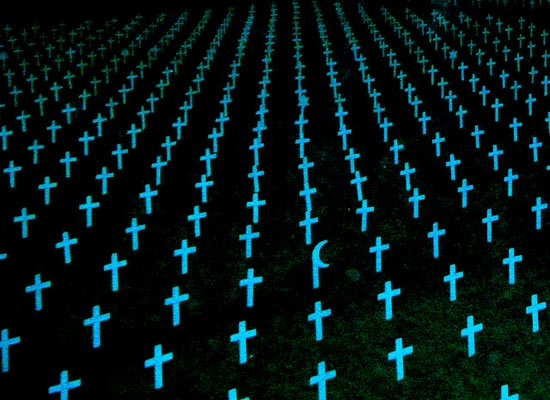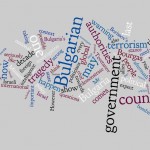Despite the riots of the Arab Spring, the internal conflict in Syria (qualified by some as a civil war), the growing tensions between Israel and Iran, and the recent episodes in the South China Sea, the world has become more peaceful for the first time since 2009, according to the annual Global Peace Index (GPI), published on June 12th of 2012.
Published by the Institute for Economics & Peace, the index measures the extent to which countries are peaceful. This year has seen the world become ‘slightly more peaceful’ – bucking the trend seen in the last two years where the ranking showed a decline in global peace. All regions excluding the Middle East and North Africa saw an improvement. Sub-Saharan Africa does not occupy the bottom spot for the first time since the GPI was launched in 2007. Austerity-driven defence cuts creating gains in several indicators of militarisation and improvements in the Political Terror Scale (which measures levels of political violence and terror worldwide in 2010) have lead to changes in the annual rankings.
Iceland is once again ranked the most peaceful peaceful country in the world, followed by Denmark and New Zealand. Syria has seen the biggest drop in margin, falling over 30 places to be placed at 147th. The UK has fallen three places to 29th position, meaning it is the first year the UK placement has not risen in the list.
The 2012 Global Peace Index
The 2012 Global Peace Index is the sixth edition of the world’s leading study on global levels of peacefulness. The GPI ranks 158 nations using 23 qualitative and quantitative indicators from highly respected sources, which gauge three broad themes: the level of safety and security in society; the extent of domestic or international conflict; and the degree of militarisation.
2012 GPI main findings
![Global Peace Index Map 2012 [Wikicommons]](http://upload.wikimedia.org/wikipedia/commons/e/ea/Global_Peace_Index_Map_2012.png)
For the sixth consecutive year, Western Europe remains markedly the most peaceful region with the majority of ts countries ranking in the top 20. The Asia Pacific region’s overall score improved by the largest margin over the 2011-2012 period
- World becomes slightly more peaceful in the last year – bucking a two-year trend.
- Sub-Saharan Africa for the first time is not the least peaceful region.
- Iceland is the country most at peace for the second successive year.
- Syria tumbles by largest margin dropping over 30 places to 147th position.
- Somalia remains world’s least peaceful nation for second year running.
- End of civil war sees Sri Lanka as biggest riser, leaping nearly 30 places.
- Sub-Saharan Africa’s levels of peacefulness have increased steadily since 2007 with improvements in ‘Relationships with neighbouring nations’, ‘Availability of small arms and light weapons’, and ‘Number of deaths from internal conflict’.
- North America experienced a slight improvement, continuing a trend since 2007.
- Latin America also experienced an overall gain in peacefulness, with 16 of the 23 nations seeing improvements to their GPI scores since 2011.
GPI indicator changes
Taking the average scores for each of the 23 GPI indicators and comparing them with those from the 153 countries analysed in the 2011 GPI, the Political Terror Scale, which measures levels of political violence and terror worldwide in 2010, registered the largest annual improvement. There were also improvements to three indicators in the military sphere, including a decline in military expenditure as a percentage of GDP in 2011, as many countries hit by economic headwinds moved to reduce budget deficits. Six of the world’s top military spenders: Brazil, France, Germany, India, the UK and the US, cut their defence budgets in 2011.
|
Top-five improvements |
Global Average Change |
Top-five Deteriorations |
Global Average Change |
| Political Terror Scale |
-0.062 |
Level of perceived criminality in society |
+0.067 |
| Terrorist acts |
-0.049 |
Likelihood of violent demonstrations |
+0.042 |
| Military expenditure as a percentage of GDP |
-0.045 |
Number of homicides per 100,000 people |
+0.036 |
| Military capability/sophistication |
-0.033 |
Level of organised conflict (internal) |
+0.033 |
| Aggregate number of heavy weapons per 100,000 people |
-0.026 |
Level of violent crime |
+0.020 |
Global monetary value of peace
According to the Institute for Economics & Peace if the world was completely peaceful in 2011, the additional economic impact would have been an estimated US$9 trillion (equal to the size of the German and Japanese economies combined). While a total elimination of violence may not be possible an achievable 25% reduction in violence could reap a peace dividend of at least US$2.25 trillion.
This amount would easily cover the European Financial Stability Facility’s $1 trillion allocation to deal with the European sovereign debt crisis while also covering the yearly cost of achieving the Millennium Development Goals.
This is a non-profit explanation







